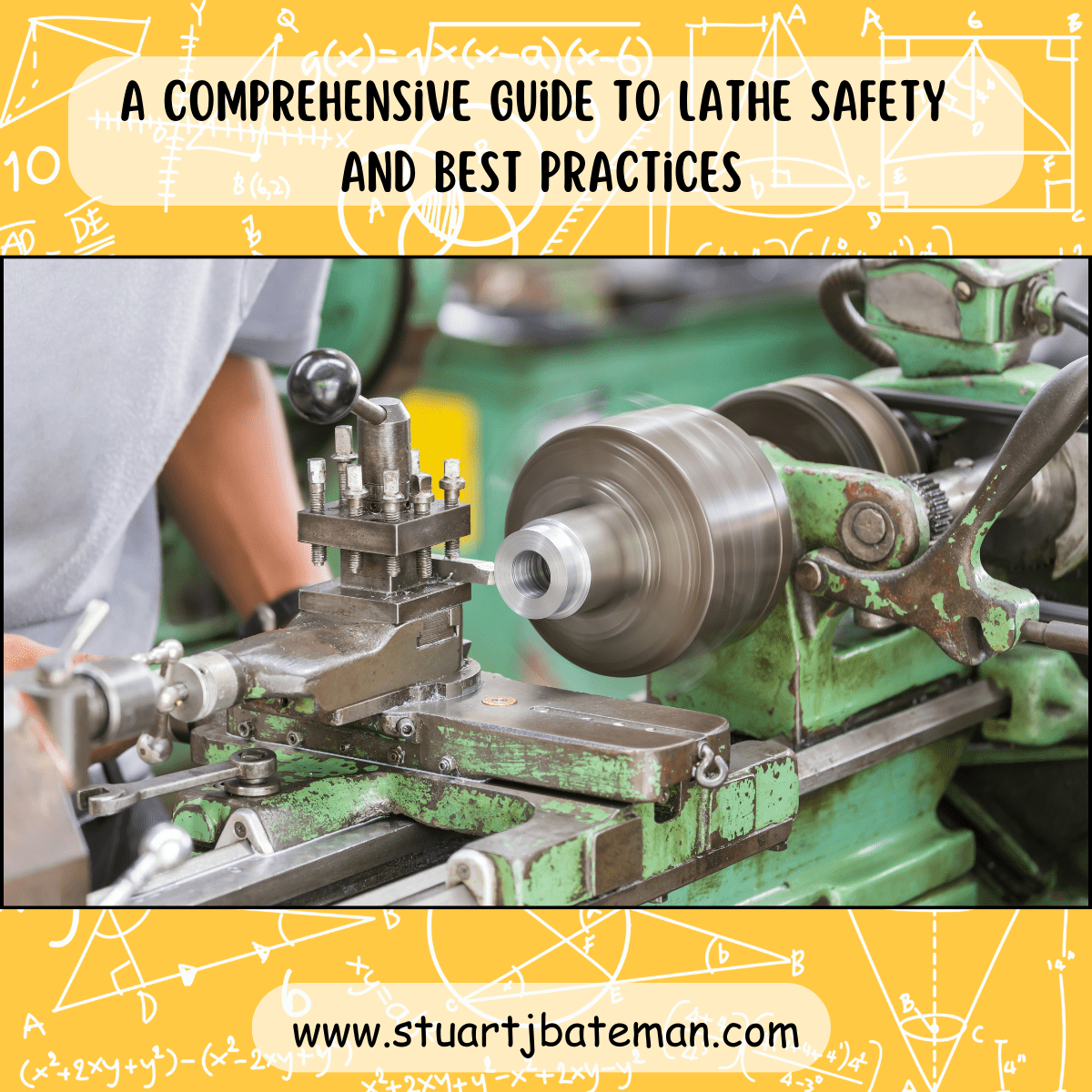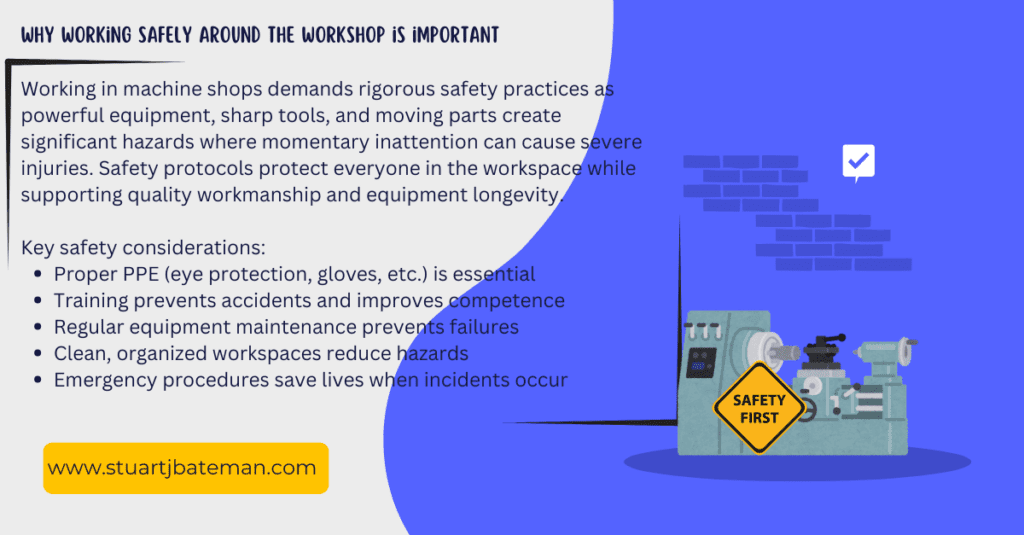A Comprehensive Guide to Lathe Safety and Best Practices
The first principles is that you must not fool yourself – and you are the easiest person to fool. – Richard Feynman

Lathe safety time!
Here’s some safety tips I’ve picked up over the years working in manufacturing (and I did look up a few), but I’m sure I haven’t covered them all.

So, if you’re a seasoned machinist, I invite you to add to this list so others can benefit from our community! But before we can get stuck into this blog let me share this great resource if you want to know more about Lathes (manual ones) and safety using them: Worksafe
- ✅ Chuck Key Caution:
Never leave the chuck key in the chuck when starting the lathe. This seemingly simple mistake can lead to severe accidents, even causing damage to property like roofs. - ✅ Clothing Awareness:
Avoid wearing loose clothing and always roll up those sleeves. Loose attire can pose a serious entanglement risk during lathe operations. - ✅ Workpiece Security:
Ensure the workpiece is securely held by the chuck, especially when not using a tailstock. Leaving it hanging out can lead to unpredictable consequences. - ✅ Tool Placement:
Keep the tool within the recommended distance from the tool post. Having it too far out can compromise stability and safety during the machining process. - ✅ Swarf Handling:
Never pick up swarf with bare hands. Swarf can be sharp and cause injuries if not handled with the proper tools. - ✅ Oil Spill Prevention:
Avoid leaving oil on the floor near the lathe. A slippery floor can lead to accidents, compromising both safety and machine integrity. - ✅ PPE Mandate:
Always use Personal Protective Equipment (PPE), including safety glasses and gloves, to safeguard against potential hazards. - ✅ Hydraulic Oil Leaks:
Do not use your hands to detect hydraulic oil leaks. Utilize proper tools and equipment for inspection. - ✅ Chuck Stoppage:
Refrain from using your hands to stop the chuck after switching off the lathe. Opt for the appropriate controls to ensure a safe shutdown. - ✅ Hair Safety:
Tie back long loose hair when working near the lathe to prevent entanglement in moving parts. - ✅ Tool Sharpness:
Use sharp tools for cutting. Dull tools not only compromise efficiency but also pose safety risks during machining. - ✅ Positioning Caution:
Never stand directly over the chuck. Always stand to the side to minimize the risk of injury in case of an unexpected event. - ✅ Equipment Inspection:
Before using a lathe that someone else has operated, perform a thorough inspection to ensure it’s in optimal working condition. - ✅ Speeds and Feeds:
Always use the correct speeds and feeds for the task at hand. When in doubt, seek guidance to prevent unnecessary risks. - ✅ Emergency Stop Awareness:
Never forget the location of the emergency stop. Being aware of its position is crucial for prompt response in case of unforeseen circumstances.
That’s all I have for now, but before I end this blog I wanted to share this great YouTube video from the channel Ultimate Reloader showing the basics in Manual Lathe safety.



What are your thoughts? Have I covered everything or is there more you know and would like to share?
I’m always learning and improving this site and my blogs, so please feel free to get in touch with me via LinkedIn or this site to discuss any topics I have covered.
If you’re having trouble finding ways to progress check out these sites filled with free learning tools:

